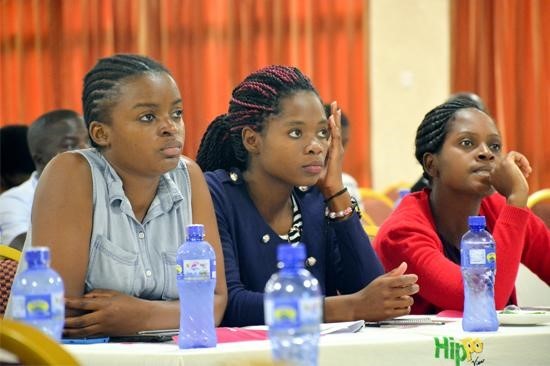- What We Do
- Agriculture and Food Security
- Democracy, Human Rights and Governance
- Economic Growth and Trade
- Education
- Environment and Global Climate Change
- Gender Equality and Women's Empowerment
- Global Health
- Humanitarian Assistance
- Transformation at USAID
- Water and Sanitation
- Working in Crises and Conflict
- U.S. Global Development Lab
Speeches Shim

Health workers are often the unsung heroes in the fight against HIV/AIDS, but many countries with a high-HIV burden continue to experience severe health workforce shortages that impede progress. One such country is Malawi, where over 900,000 people are currently living with HIV [PDF, 1.7MB] with only three doctors, nurses and/or midwives per 10,000 population (compared to the recommended minimum number of 41). The high HIV prevalence rate coupled with a severe health workforce shortage and a multiyear Government of Malawi hiring freeze have constrained progress toward advancing scale-up of HIV services to achieve epidemic control.
Significant investments in human resources for health (HRH) remuneration, or hiring of additional health workers to address immediate staffing gaps, have been made by country and donor programs to scale immediate needs for achieving HIV epidemic control and other essential health services. With support from the U.S. President’s Emergency Plan for AIDS Relief (PEPFAR), the USAID-funded Human Resources for Health in 2030 (HRH2030) Program is helping to alleviate workforce constraints by hiring nearly 300 health workers for a variety of roles, such as midwifery assistants, medical assistants and clinical technicians, that are key for successful HIV service delivery. HRH2030 is working closely with the Government of Malawi in recruitment of health workers that are being deployed across 64 health facilities in two high HIV-burden districts: Lilongwe and Zomba. The Government of Malawi has signed an agreement to gradually absorb the health workers by 2020.
The first recruitment drive, held in November 2017, resulted in the deployment of 195 workers to health facilities. Over 28 percent of these health workers are previous beneficiaries of PEPFAR pre-service education training scholarships, many of whom have been unemployed since graduation due to hiring freeze constraints. The salaries support not only provide job opportunities for health workers who have been unemployed due to the hiring freeze, but also ensure that PEPFAR’s investments in pre-service education are benefiting Malawi’s health sector and labor market.
While still early, facility managers and health officers are already noticing positive improvements due to the additional health workers. During follow-up visits in February 2018, supervisors commented on the successful integration of the additional workers supported by PEPFAR with existing facility staff. Previously long queues are noticeably shortening, and the existing staff are experiencing less burnout and more free time to take off-duty status, important factors in supporting health worker retention.
However, even with the additional health workers, overall health worker staffing shortages still remain a big challenge. HRH2030 is closely monitoring the new health workers and associated retention factors in order to assess the impact and sustainability of the additional HRH support. The early results of the Malawi investment in additional health workers to support HIV services is promising and can be a lesson learned for other countries employing similar approaches to support further scale-up of HIV services.

Comment
Make a general inquiry or suggest an improvement.